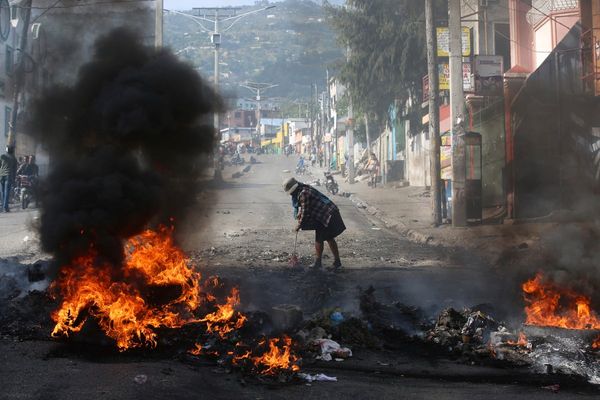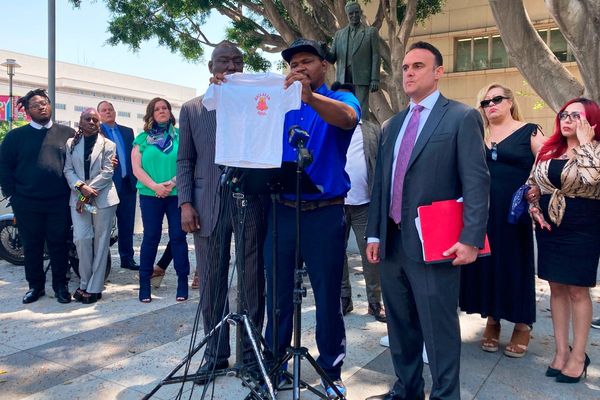Human activity has already warmed the planet by more than one degree Celsius, fuelling forest fires, exacerbating floods, super-powering storms and increasing the frequency of deadly heat waves.
The main human driver of climate change is carbon dioxide emissions from the burning of fossil fuels. Transitioning quickly off fossil fuels to other energy sources (solar, wind) is key to limiting global warming. To stay within 1.5 C of warming, we need to stop building new fossil fuel projects from this point forward.
And yet, new pipelines, oil drilling projects and fracked gas wells are still being built. At a time when fossil fuel production should be decreasing, fossil fuel production is projected to expand — globally and in Canada.
The total planned fossil fuel production for 2030 is double the level consistent with limiting warming to 1.5 C. In Canada, public support for expanding fossil fuel infrastructure seems to be increasing, possibly as a result of U.S. President Donald Trump’s tariff threats.
What will it take to turn this pattern around? What might increase public support for a speedy transition away from fossil fuels?
Increasing opposition
Recently, in the Sustainability, Identity and Social Change Lab at Simon Fraser University, we successfully increased people’s opposition to new fossil fuel projects by simply asking them to imagine a sustainable world. We recruited American participants online, who were paid a small amount to complete a survey.
Half were chosen at random to spend two to three minutes imagining and writing about a world in which humans have a sustainable relationship with the rest of the natural world. The other half were asked to write about their morning routine. We then asked participants whether they supported or opposed the development of two major and controversial fossil fuel infrastructure projects.
The Willow Project is a proposed oil drilling project in Alaska that was approved by former U.S. president Joe Biden’s administration in 2023, shortly after we collected our data. The Mountain Valley Pipeline carries methane gas for 300 miles through West Virginia and Virginia. At the time of our study, it was still under construction and facing legal challenges, but went into operation last year.
The participants who were asked to imagine a sustainable world expressed more opposition to the two fossil fuel projects than did participants who were not asked to imagine a sustainable world.
For example, among participants who did not imagine a sustainable world, 44 per cent disagreed or strongly disagreed that the Willow Project should be completed. That opposition increased to 53 per cent for participants who imagined a sustainable world. Participants who imagined a sustainable world were also more likely to support the U.S. signing a Fossil Fuel Non-Proliferation Treaty — a campaign to get governments around the world to commit to ending the development of new fossil fuel projects.
Imagining alternatives
When we looked at what participants wrote when describing a sustainable world, they frequently mentioned a transition from fossil fuels to clean energy. Participants generally described a sustainable world in positive terms, including a cleaner and healthier environment free from pollution, with more intact natural habitats and green spaces, and more harmonious and equitable relationships between humans.
When focused on this alternative world, our participants brought their attitudes and intentions more in line with the desirable world they imagined and became more opposed to new fossil fuel projects.
These findings are consistent with the idea that the more people can imagine alternative social arrangements, the more likely they are to support and work for social transformation. Bringing this idea into the environmental domain, we developed a measure of how well people can imagine a sustainable relationship between humans and the rest of nature.
We found that people who agreed with statements like “I can easily imagine a world in which we supply all of our energy needs without harming the natural world” and “It is easy to imagine a world where we no longer use fossil fuels” were more likely to express a willingness to engage in behaviours that support climate change mitigation, like participating in an environmental protest or getting involved with an environmental group.
In another study with Canadians, participants who could imagine a sustainable future were more likely to write and sign a letter to the Canadian environment minister asking for more action on climate change.
Clear pictures
Similar results have been found in research on utopian thinking: when people thought about a green utopia, they reported greater willingness to engage in pro-environmental actions, such as signing pro-environmental petitions and giving money to environmental groups.
Other researchers found that asking U.S. participants to imagine “a positive future in which climate change has been significantly addressed” led to higher intentions to engage in climate action. In a study of French participants, reading a positive vision of a “decarbonated” world increased participants’ intentions to engage in pro-environmental behaviour.
The implication for those who want to promote pro-environmental social change — including putting an end to new fossil fuel projects — is to provide people with clear and detailed descriptions of how a sustainable world would function and what it would be like to live in that world.
With a clear picture of what a sustainable world would be like, and knowing what to work toward, people will be more likely to work for change.
Michael T. Schmitt receives funding from the Social Sciences and Human Research Council.
Annika E. Lutz receives funding from the Social Sciences and Human Research Council.
This article was originally published on The Conversation. Read the original article.







